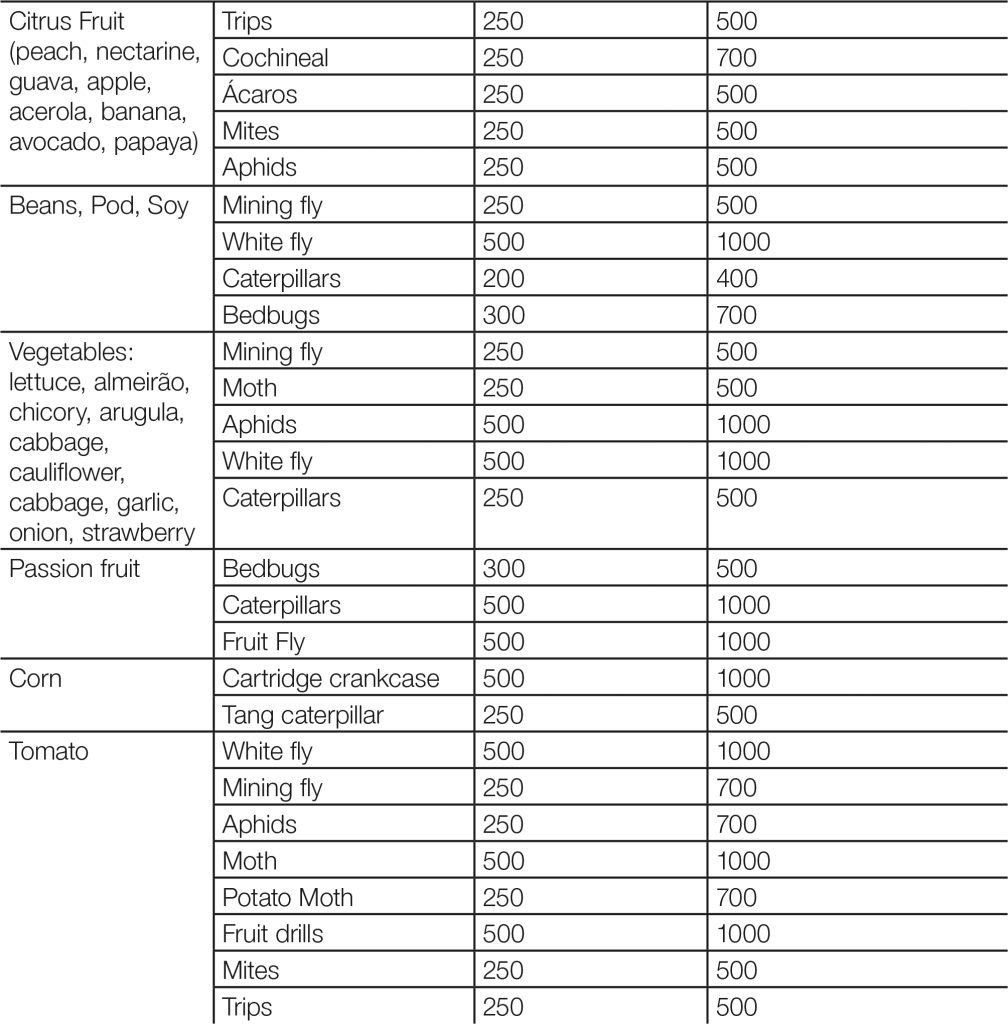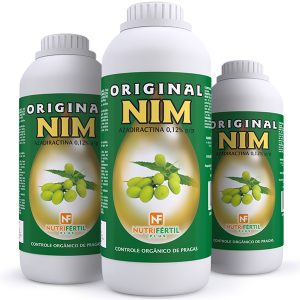
ORIGINAL NIM
Originally from India, Azadirachta indica is cited in the Vedas (sacred books) as the tree of life 4,000 years ago. It belongs to the Meliaceae family (the same one from Santa Bárbara or Cinamomo, Cedro and Mahogany), researched, cultivated and growing in the USA, Australia and Central America. Of the active substances of the Nim, the main one is the Azadirachtina, but there are other principles: triterpenoids, geduins, nimbim and liminoids, that potentiate their insecticidal action. Each gram of seed contains 45.71mg of oil and 3.6mg of Azadirachtin.
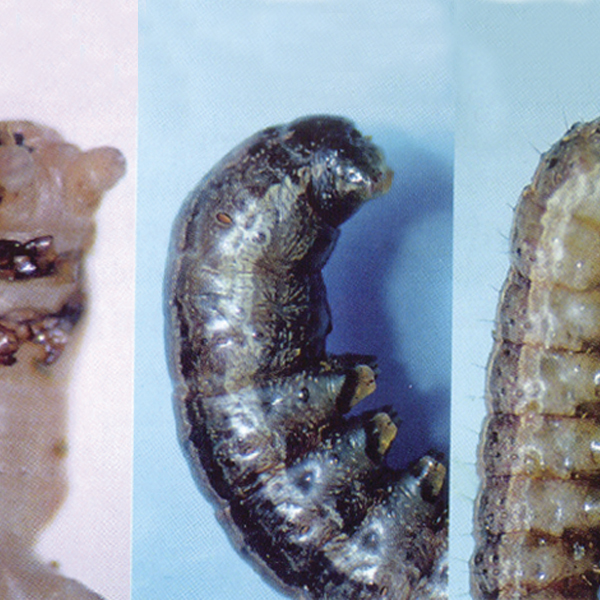
PESTS
There are reports of control of more than 413 species of crop pests and creations, including home circuit: whitefly, leafminer, fruit fly, aphids, Brasileirinho, fruit moth, carcass caterpillar, tomato borer, phytophagous mites, insects, various beetles, caterpillars, domestic flies, cockroaches, fleas, mosquitoes, mosquitoes, including Aedes aegypt, berne, ticks, hornflies, lice and nematodes, (tomato and potato), bean rust, Rhizoctomia solani, R. oryzae, Sclerotium rolfssi and Fusarium oxysporum.
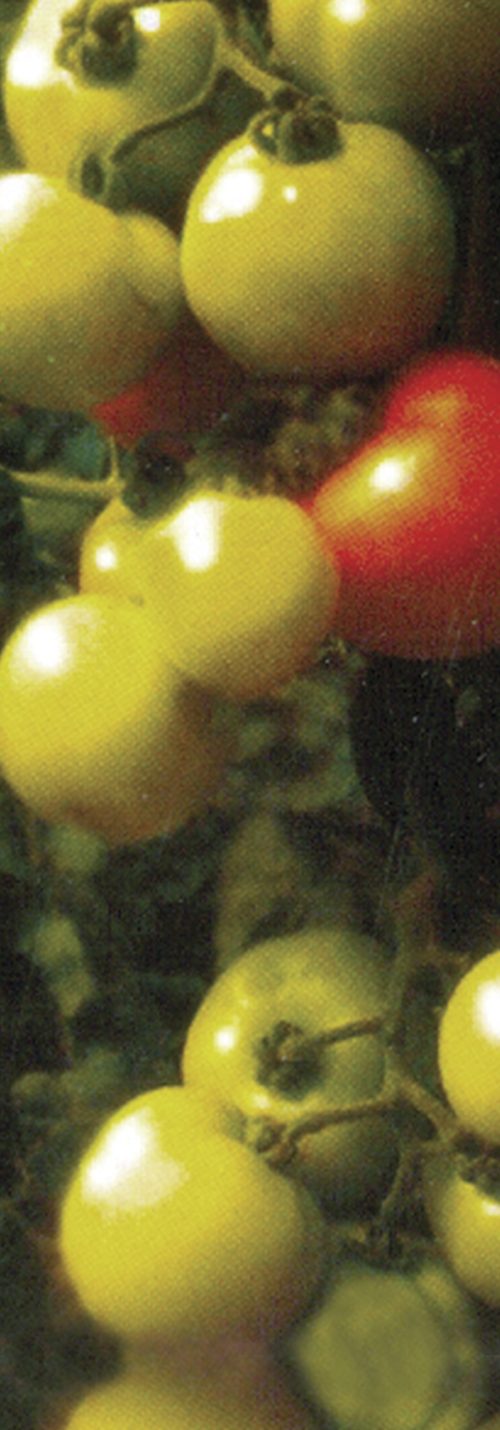
PROPERTIES OF THE NIM EXTRACT
Agriculture
– Insect repellency and limitation of appetite;
– Disruption of insect growth (ecdysis disorder;
– Death in the adult insect feeding on treated plants as a young man;
– Decreased egg laying;
– Death of nymphs and insect eggs;
– Decreases population of phytophagous nematodes;
– Inhibits growth of some species of bacteria;
– Retards denitrification of soil;
– Fungicide (95% control in bean rust), inhibits aflotoxin production.
As they do not cause the immediate death of the insect but rather the interruption of its development and consequently reduces the population of pest, it fits in the concept of Biological Control of Plagues.
Livestock
– Controls various pests: tick, lice, berne, horn fly, parasitoses (vermifuge), both through ingestion of the pie and through topical use (POUR ON and spraying on animals and stables);
– Nim’s pie eliminated in the stool, prevents proliferation of fly;
– Bactericide and fungicide, suitable for bicheiras;
– It’s healing.
Medicine
Used in various forms (soaps, teas, topical and oral oil, creams, gels and shampoos). It acts in numerous diseases: gastritis, diabetes, inflammation, intestinal parasites, ulcers, cavities, clefts, vitiligo, psoriasis, tumors, candidiasis, inflammations, lice, fissures, dandruff and mycoses.
Cosmetics
Treats dandruff, skin moisturizing, hyper / hypochromic stains, wrinkles, acnes, etc.
PRESENTATION
Nim in Oil
Use 150 to 250 ml per 20 liters of water and spray the plants, stables, houses, schools, restaurants and hospitals. It can be mixed with biofertilizers diluted in 0.5 to 1%. Do not mix Nim with Bordeaux and Sulfoccalcium.
MODE OF USE
Indicated as preventive and curative, with repeated applications according to the agronomist’s orientation (under the concept of ecological pest management) and after soil balance.
Non Toxic
It does not affect pollinators (bees), natural predators of the pest: ladybugs, spiders, birds, amphibians and mammals, even if they feed on insects affected by Nim. Earthworms are not affected (even if using Nim pie or Nim leaves in the ground). Nim is an ecological balancer of the population.
Nim products used in agriculture and livestock do not pose any risk of human contamination. Nim LD 50 is 500 mg / kg, NaCl LD is 3000 mg / kg (therefore, 66% less toxic than table salt).
In addition, Nim has proven medicinal action in humans.
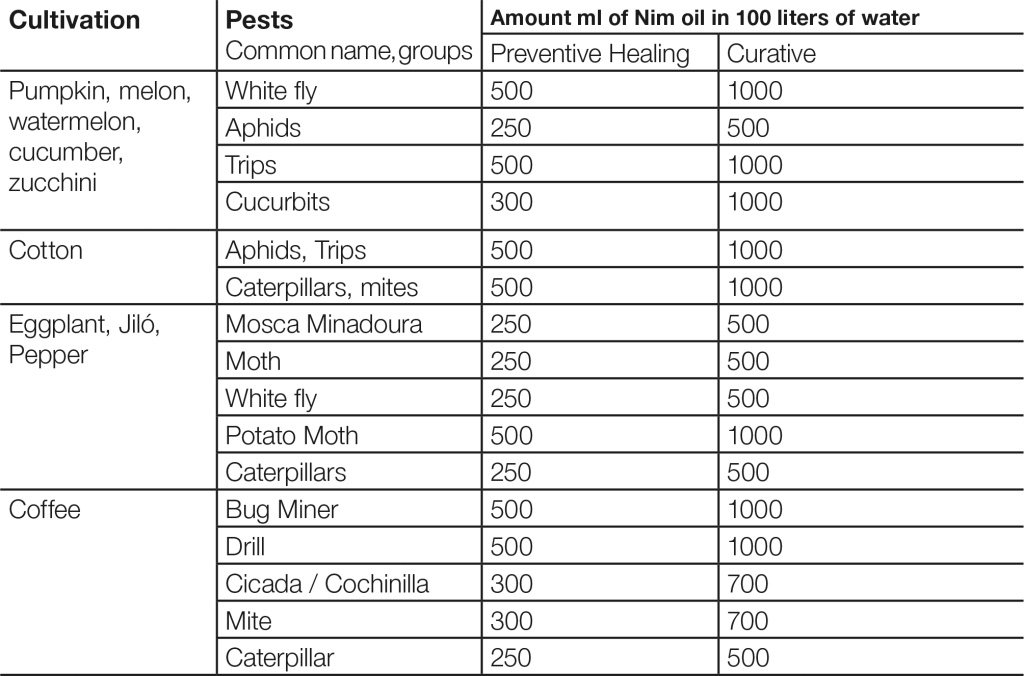
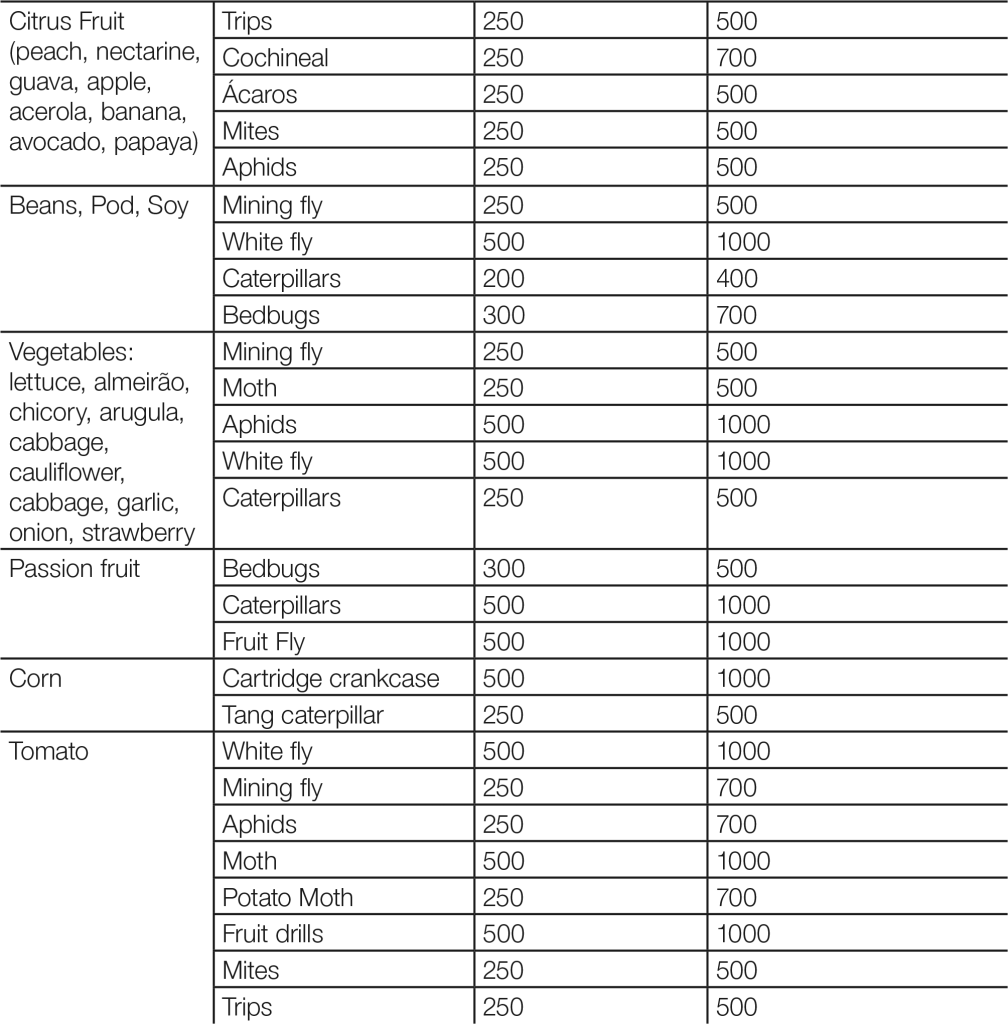
Nim’s pie
Result of cold extraction of Nim (Azadiratcha indica) almonds with 500 to 800 ppm azadiratchtin content. When used in the soil, the active principle is absorbed from the crown to the root, which circulates with the sap protecting the plant against the pests (mainly nematoid). Use from 250 to 500kg / ha. In livestock, it is mixed with the feed 1g / day / adult animal or 1% in the salt. For pets a pinch of pie in ration 1x / week.
